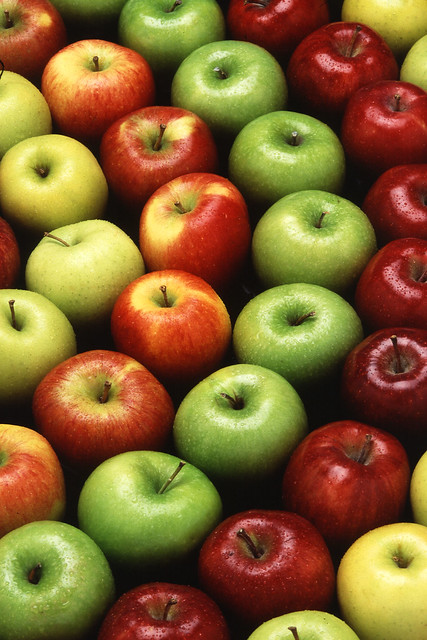USA
April 3, 2018
by Paul M. Zankowski, Senior Advisor for Plant Health and Production and Plant Products, Office of the Chief Scientist

Apples are an all-American success story. Thanks to fruit-breeding research, we're able to enjoy more productive, healthy, and flavorful new varieties every year.
Have you ever wondered how new looking and different tasting types of apples or tomatoes come to be? Improvements in taste, size, and color are often the result of years of research and plant breeding efforts. Many times, plant breeders search for traits in older varieties of plants to create new varieties that could be useful today, but not widely grown.
Fortunately, USDA maintains a kind of plant library, called the National Plant Germplasm System (NPGS), that stores samples of plant material from throughout the history of American agriculture, and from across the world. The NPGS is a resource for plant breeders, scientists, and farmers who need to obtain varieties not available elsewhere that can be used to improve the crops that we eat today.
There are many different forms of plants in this ‘living library,’ including seeds, cuttings, DNA, leaves, pollen, and tissue cultures. The reason for all these different forms is because not all plants can be stored as seeds. For example, potatoes are stored by growing a small plantlet in a test tube and then flash-freezing it to slow down growth. Potatoes in this form can be kept for many years until they are needed. Like potatoes, apples aren’t easily stored as seeds because they are usually grown as clones through a process called grafting. That’s why apple ‘libraries’ are often best maintained in living orchards where cuttings, or scionwood, can be taken for grafting.
Currently, the NPGS holds over 576,000 accessions of different types of germplasm maintained in 19 locations throughout the U.S. USDA also funds foreign and domestic plant exploration and exchanges to obtain new germplasm for the NPGS. In 2016, these efforts led to a new carrot, onion, hardy kiwifruit, apple, bean, and potato germplasm as well as others.
The NPGS is a one-stop store where plant breeders can search for samples of specific plants that can be used in breeding programs, or germplasm, with desirable characteristics. These characteristics can act as part of the ‘recipe’ for breeding a new plant variety. And when we say one-stop-shop, we really mean it! Breeders can visit the USDA Germplasm Resource Information Network database, fill a shopping cart with their desired germplasm, and have it delivered freely and without restrictions for use in plant breeding. In fact, in 2015 alone, USDA distributed over 239,000 orders.
So, consider the origin the next time you taste a delicious new, tangy blueberry. It might be thanks to germplasm from the USDA’s NPGS collection.